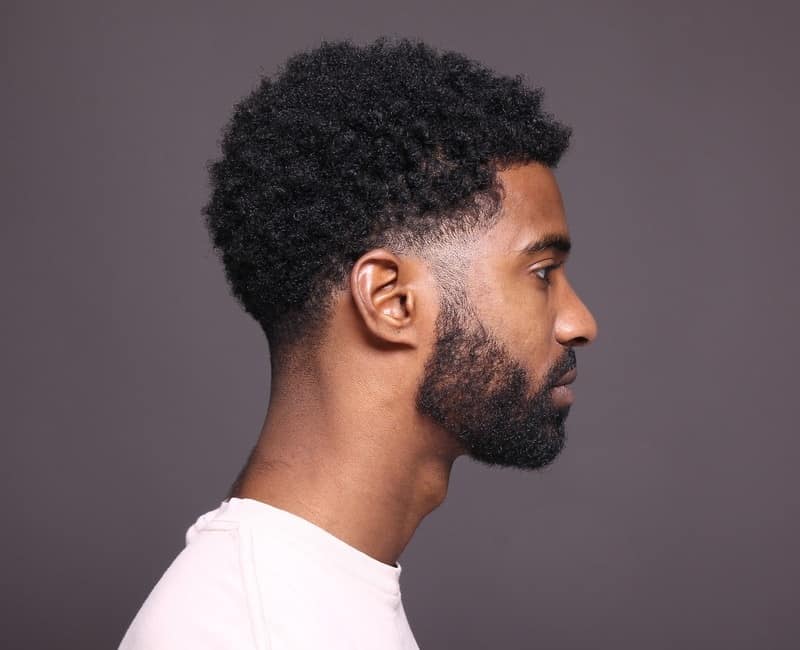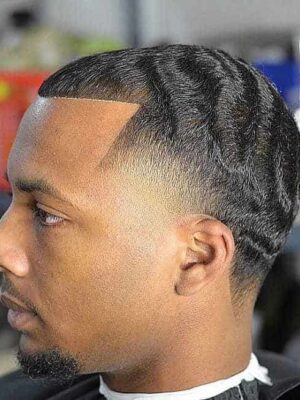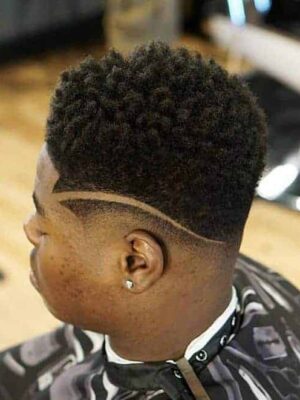Are you ready to level up your grooming skills and master the art of cutting black men’s hair? Whether you’re a professional barber dedicated to satisfying your black clients or an enthusiastic individual looking to create your own stylish haircuts, this article is your go-to guide.
Black men’s hair is very different from that of any other race. Black barbers are well aware of all the differences and know how to handle this type of hair. However, barbers of other races often do not know how to cut black men’s hair, leading to major mistakes and extremely dissatisfied customers.
Fortunately, there are a few simple techniques that can be employed when working with the hair of an African American man. Learning and practicing these techniques will enable any barber to master the art of cutting this hair type and keep all of their clients happy with their service.
How To Cut Black Men’s Hair
Here are 10 easy and quick steps for the professional barbers who want to learn how to cut black men’s or an African American man trying to cut his hair at home,
1. Preparation
The first step in cutting black men’s hair is preparing the hair for the haircut. Given its naturally curly texture, black hair tends to be quite prone to tangling.
Thus, detangling is an absolutely vital part of the process. A pick is an excellent tool for this job when dealing with long hair. A pick can navigate through the dense curls and remove tangles efficiently, without causing too much stress or damage to the hair.
For shorter hair, a brush can be used to straighten the hair. The brush bristles can reach the scalp and help distribute natural oils throughout the hair, which can also aid in detangling.
Always brush in the direction of the hair growth, also known as brushing ‘with the grain’. This helps prevent breakage and minimizes discomfort for the client.
2. Determine the Hair Length
The next step in the process involves determining how much hair to cut off. This step requires careful consideration to ensure the end result aligns with the client’s expectations. Clippers are an essential tool for this task. They come with a variety of guards, each with different lengths, allowing for a range of haircut lengths.
Choosing the right guard and adjusting the clipper blades will give you control over the final length of the hair. It’s important to understand how each guard works, and the length it provides, so you can tailor your cuts to each client’s preferences. Discuss with the client beforehand about their desired length to avoid any miscommunications or disappointments.
3. Protect the Client’s Clothing
Ensuring the client’s comfort and satisfaction is paramount, and this includes taking measures to protect their clothing during the haircut.
This step involves putting a towel or a barber’s cape around the client’s shoulders. This helps to catch any falling hair and keeps it from getting onto the client’s shirt.
It prevents the client from having to deal with stray hairs on their clothing, which can cause discomfort and the inconvenience of needing to change or wash their clothes immediately after the haircut.
4. Segment the Hair
This process involves mentally dividing the hair into four quadrants and methodically working through each one. Segmenting helps ensure consistency and aids in keeping track of the areas that have been cut.
Begin by completing one quadrant before moving on to the next. Jumping around between sections can lead to an uneven cut, and it’s easier to maintain balance and symmetry by finishing one area before starting another. Consider the client’s head shape and hair density while dividing and working through the quadrants.
5. Cutting Direction
The direction in which you cut the hair can significantly impact the end result. For longer hairstyles, cut ‘with the grain’ of the hair. This means moving the clippers or scissors in the same direction that the hair grows.
For shorter hairstyles, cut ‘against the grain’, which means moving the clippers or scissors against the direction of hair growth. This technique provides a closer cut and can make the hair appear more even.
For afros, the hair can be cut in any direction due to its volume and density. However, when cutting an afro, remember to trim off small amounts of hair at a time because it’s always easier to cut more if needed, but you can’t add hair back if you cut too much.
6. Leveling Uneven Patches
Once you’ve cut the hair, the next step is to assess your work and look for any uneven or rough patches. These are areas where the hair is longer than in other places, which can make the overall hairstyle look unkempt. To even out these areas, you may need to apply a bit more pressure while cutting to achieve a closer cut.
The goal is to have the hair look consistent and uniform all around, so take your time during this step. Revisit any quadrants if needed, and be mindful of the client’s comfort if you need to apply additional pressure.
7. Hairline Trimming
Trimming the hairline is an important aspect of haircutting that should not be overlooked. The hairline frames the face, and a clean, neatly-trimmed hairline can significantly enhance the overall appearance of the haircut.
Start by removing all guards from the clippers and setting the blades to their lowest setting for a close cut. Begin on one side of the hairline, then trim all the way around to the other side.
Aim to follow the natural curvature of the client’s head as you trim. This helps give the hairline a rounded, natural look that complements the client’s face shape.
8. Temple Hairline and Sideburns
The temple hairline and sideburns are key areas that can influence the overall look of a haircut. The temple hairline should be trimmed at a right angle to the top of the hairline. As you move towards the sideburns, create a smooth arc.
This should blend seamlessly into the sideburns for a cohesive and polished look. Make sure to carefully trim the sideburns at a length that suits the client’s face and matches the overall haircut. Always check both sideburns to ensure they’re even.
9. Back Hairline
Cut the sides of the back vertically, aiming to make them as even as possible. The back hairline should be gently edged, with the goal of creating a line that is even from side to side and parallel to the floor.
The back hairline gives a haircut its finished look from the back, so make sure to spend sufficient time making sure it’s neat and even. Keep the client’s head shape and neck length in mind as you shape the back hairline.
10. Aftershave and Final Check
As a final step, apply a small amount of aftershave to your hands and pat down the edges of the client’s hair. This process helps prevent any skin irritation that might result from the close cutting in these areas.
Aftershave can also provide a refreshing sensation and leave the skin feeling clean and rejuvenated, contributing to the overall experience of the haircut.
Once the haircut and aftershave application is complete, allow the client to view the finished cut in a mirror. This will give them an opportunity to assess the haircut and decide if it meets their expectations or if more needs to be cut off.
Always be ready to make small adjustments based on the client’s feedback, as customer satisfaction is the ultimate goal of any haircut.
Learning how to cut black mens hair is not difficult. However, one must learn these basic steps and procedures in order to properly serve African-American clientele. Their hair is very different in texture and moisture content from the hair of any other race.
Using improper techniques with this hair type can result in completely unacceptable haircuts that can not be corrected short of shaving the head and allowing the hair to grow back out over time.










